


xxxxxThe Scotsman James Simpson was appointed professor of midwifery at Edinburgh University in 1840. He was among those doctors chosen to attend Queen Victoria, and he was the first physician in Britain to make use of ether. It was in 1847, following a series of experiments, that he discovered chloroform, and published his Account of a New Anaesthetic Agent, advocating its use in childbirth and general surgery. The idea was met with scepticism by some of his fellow obstetricians, and strongly opposed by many in the Church, but after Queen Victoria asked for chloroform during the birth of her seventh child, its use became widely accepted. Simpson also introduced new methods and instruments in midwifery, including the long forceps named after him and the use of wire sutures. In 1844 he opened a Dispensary for Women and Children in Edinburgh, and after his death the Simpson Maternity Hospital was established in the city in his memory. He was knighted in 1866, the first person to be so honoured for services to medicine.
JAMES YOUNG SIMPSON 1811 -
(G3c, G4, W4, Va, Vb)
Acknowledgements
Simpson: frontispiece for Sir James Young Simpson and Chloroform by Henry Laing Gordon, 1897, artist unknown. Chloroform: pen and ink drawing from 1840s, artist unknown – Wellcome Library, London. Holmes: date and artist unknown. Graves: date and artist unknown. Basedow: date and artist unknown. Helmholtz: detail, by the German portrait painter Hans Schadow (1862-
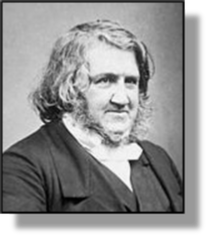 xxxxxJames Simpson was born at Bathgate, West Lothian, the youngest son of a baker. A gifted child, after attending the local school, he studied medicine at Edinburgh from the age of 14 and, having gained his M.D. in 1832, was appointed professor of midwifery there in 1840. Within a few years he had gained a wide reputation as a gynaecologist, and was among those physicians chosen to attend Queen Victoria during her stays in Scotland. It was early in 1847 that, having learnt about the properties of the chemical compound ether, he used it in his practice, becoming the first to make use of it in Britain. Itxwas only in October of the previous year that the value of ether as a general anaesthetic had been successfully demonstrated at Massachusetts General Hospital, Boston, by the American dental surgeon William Thomas Morton (1819-
xxxxxJames Simpson was born at Bathgate, West Lothian, the youngest son of a baker. A gifted child, after attending the local school, he studied medicine at Edinburgh from the age of 14 and, having gained his M.D. in 1832, was appointed professor of midwifery there in 1840. Within a few years he had gained a wide reputation as a gynaecologist, and was among those physicians chosen to attend Queen Victoria during her stays in Scotland. It was early in 1847 that, having learnt about the properties of the chemical compound ether, he used it in his practice, becoming the first to make use of it in Britain. Itxwas only in October of the previous year that the value of ether as a general anaesthetic had been successfully demonstrated at Massachusetts General Hospital, Boston, by the American dental surgeon William Thomas Morton (1819-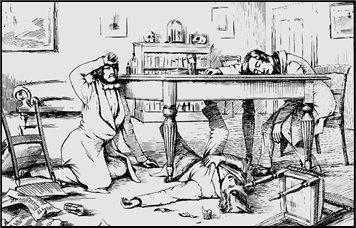 uickly taken up by surgeries and hospitals in Europe.
uickly taken up by surgeries and hospitals in Europe.
xxxxxLater in 1847, however, following a series of experiments upon himself and his two assistants, Simpson discovered chloroform, and found it preferable to ether. The illustration here shows Simpson and his assistants trying out various “vapours”. Dinner guest were also invited to take part in the experiments, but some, like the Danish writer Hans Christian Andersen, were not happy with the idea!
xxxxxIn November Simpson published his controversial Account of a New Anaesthetic Agent, a work in which he explained the use of this clear, colourless liquid to ease the pain of childbirth and to assist in general surgery. It was met with scepticism by some of his fellow obstetricians, and was strongly opposed by many members of the Church -
xxxxxApart from his pioneer work in anaesthetics, Simpson introduced new methods and new instruments in the branch of midwifery. He designed the long forceps which are named after him, and devised a means of stopping haemorrhage by the use of wire sutures and a procedure known as acupressure. In 1844 he opened a Dispensary for Women and Children in Edinburgh, and this cared for over 7,500 patients. During his career he was appointed physician to the Queen, made President of the Royal College of Physicians in 1850, and knighted in 1866, the first person to be so honoured for services to medicine.
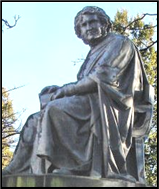 xxxxxA likeable man with an abundance of energy, he gained a world-
xxxxxA likeable man with an abundance of energy, he gained a world-
xxxxxIncidentally, when chloroform was first introduced, its misuse by a doctor led to the death of a 15-
xxxxx…… Thexquestion as to who first discovered ether caused a great deal of controversy at the time. Of those who claimed priority, the American surgeon Crawford William Long (1815-
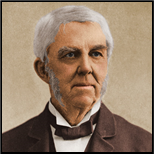 xxxxxThex1840s saw a number of other important advances in medicine. In 1843, for example, the American physician Oliver Wendell Holmes (1809-
xxxxxThex1840s saw a number of other important advances in medicine. In 1843, for example, the American physician Oliver Wendell Holmes (1809-
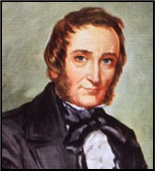
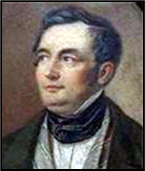 xxxxxAndxin the same year, 1843, the Irish physician Robert James Graves (1796-
xxxxxAndxin the same year, 1843, the Irish physician Robert James Graves (1796-
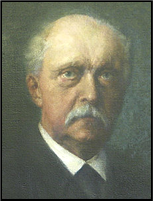 xxxxxNotable in the 1850s was the work of the German physician and physicist Hermann Ludwig Ferdinand von Helmholtz (1821-
xxxxxNotable in the 1850s was the work of the German physician and physicist Hermann Ludwig Ferdinand von Helmholtz (1821-
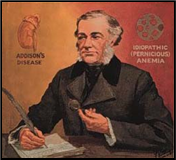 xxxxxThomas Addison (1793-
xxxxxThomas Addison (1793-
xxxxxIncidentally, as we shall see, Hermann von Helmholtz played an important part in the development of thermodynamics. His paper On the Conservation of Force, published in 1847, provided one of the first and clearest statements of the law of the conservation of energy.
Including:
Medical advances in
the 1840s and 1850s

Va-


